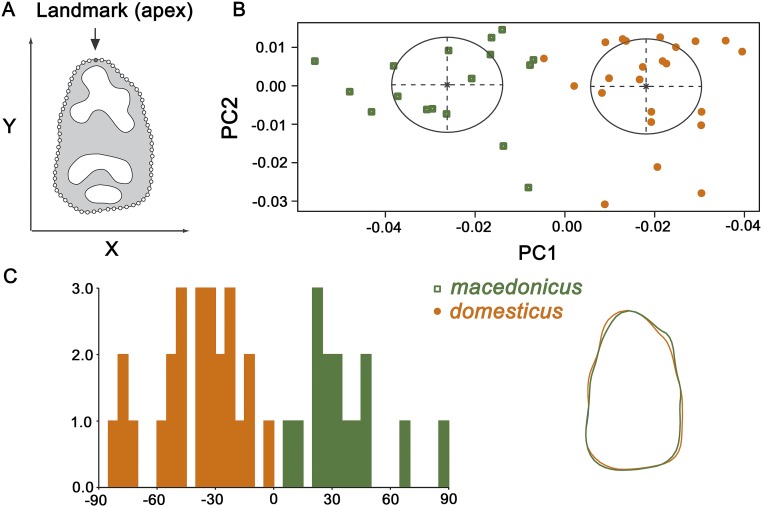Fig. S1.
Molar shape differentiation among modern sympatric species in Israel, Mus macedonicus (macedonicus) and Mus musculus domesticus (domesticus). (A) Landmarks and semilandmarks digitized on the external outline of the crown of M1. (B) Model-based clustering of shape variables (PC1 and PC2). (C) Histogram of discriminant factors on shape variables after cross-validation and visualization of shape changes from domesticus to macedonicus along the discriminant axis. A geometric morphometric analysis for distinguishing the two sympatric Mus species in Israel, domesticus and macedonicus, found no significant molar size differences (ANOVA, Welch F test: F = 3.148, df = 36.43, P = 0.08436), but did detect significant differences in molar shape (multivariate ANOVA: Wilk’s Lambda = 0.087, df1 = 13, df2 = 26, F = 20.78, P = 0.0001). Supervised classification found a correct classification of 100% for samples of the two species after cross-validation. Moreover, an unsupervised approach with Bayesian modeling found clear separation between the two taxa.

